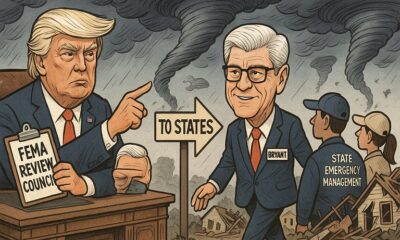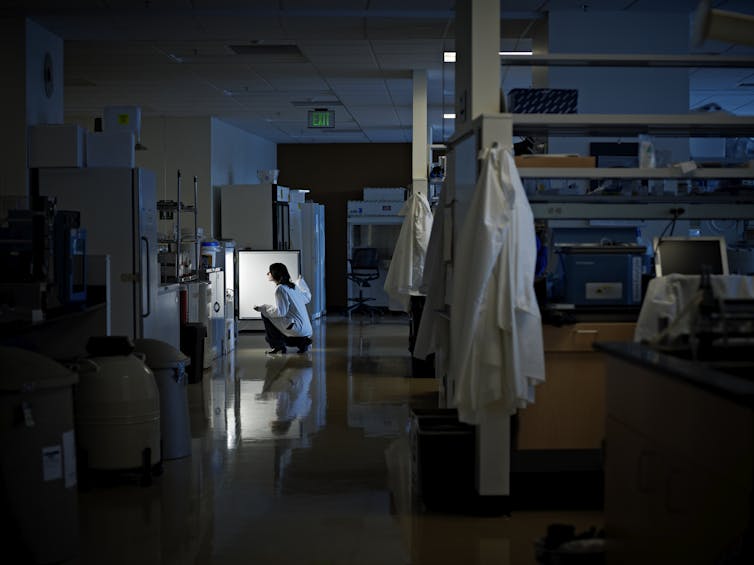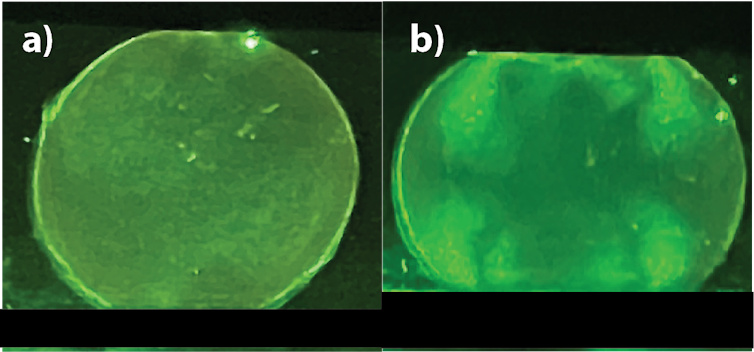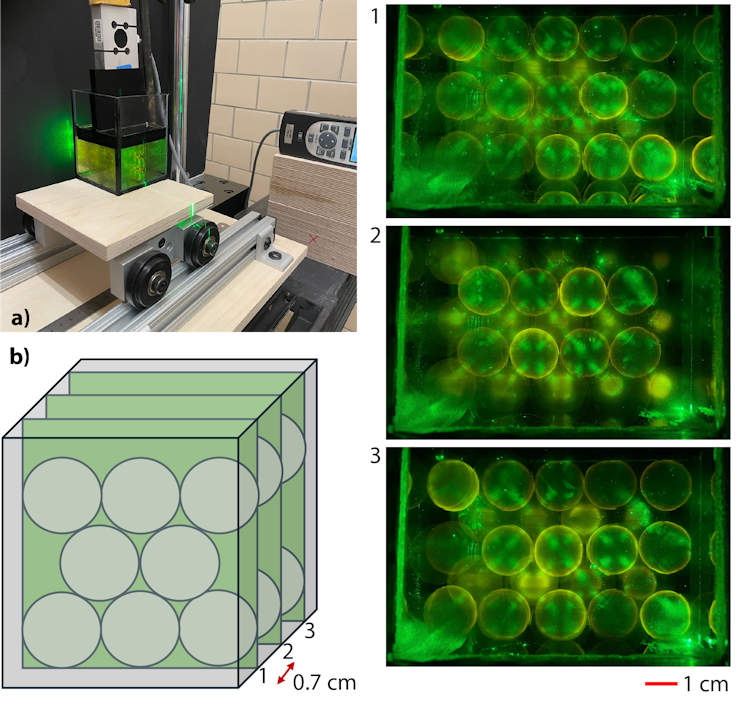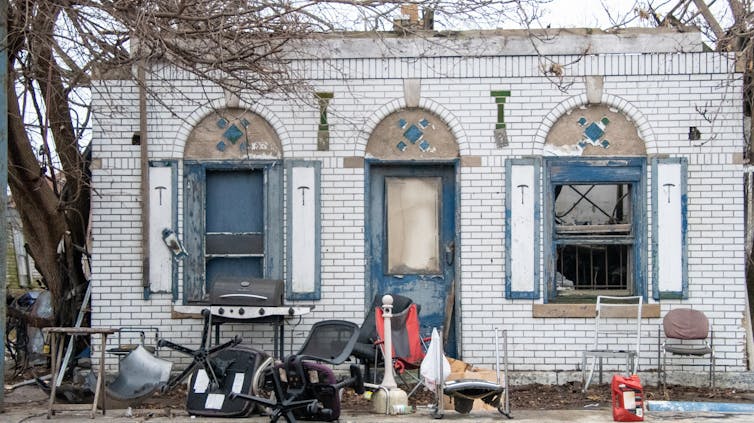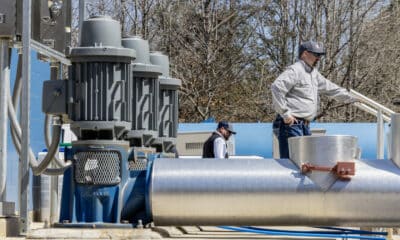Rita V. Burke, University of Southern California and Santina Contreras, University of Southern California
The 2025 Los Angeles wildfires reduced more than 15,000 structures to ash in a matter of days. Among the devastation were 11 public and private schools and 30 child care facilities. In all, the fires disrupted the education and daily lives of over 700,000 students.
The fires first erupted on Jan. 7, 2025, in the Pacific Palisades, a small enclave of Los Angeles, and in Eaton Canyon, where the tight-knit community of Altadena is nestled in the foothills just north of Pasadena. Fierce winds pushed the flames through neighborhoods, making this one of the top five most destructive wildfires in California history.
In the immediate aftermath of this disaster, much of the focus has been, rightfully, on lives lost, homes damaged or destroyed, and the ability to maintain livelihoods. But noticeably missing from most media coverage have been the consequences of the wildfires for children and discussion of the unique challenges they face surrounding disasters.
We are a disaster epidemiologist and a disaster planner at the University of Southern California with almost 40 years of experience between us. We have studied pandemics, tornadoes, hurricanes and earthquakes.
But when the destruction impacts your own community, it hits differently. Like many others, we were directly affected by the school closures and poor air quality in the Los Angeles area.
We both had friends and colleagues who suffered property damage in the fires, including Rita’s best friend who lost her home in the Altadena fire. Our work, which focuses on disaster recovery and resilience in children, suddenly felt deeply personal.
We are currently studying the effect of wildfires on families and what factors help children recover faster and lead to more resilient lives.
The importance of schools
School districts across the region closed their doors due to dangerous air quality and structural damage. This included the Los Angeles Unified School District, which is the second-largest in the nation, serving over 500,000 students. Some schools were destroyed, while others were left with hazardous conditions, including toxic ash from burned homes. Even when schools reopened, many parents and caregivers were worried about sending their children back into classrooms that might not be safe.
This disruption in education extends beyond a few lost school days. Research shows that prolonged school closures can significantly affect children’s learning, mental health and sense of security. After major disasters, students often experience academic setbacks, increased anxiety, and emotional distress.
According to the Education Recovery Scorecard, as of spring 2024 the average U.S. student remained nearly half a grade level behind prepandemic achievement in math and reading, which points to the long-term impacts of school closures.
Rita’s best friend who lost her home shared that when it came to her children, her immediate priority “was getting them back into some type of normalcy.”
To her, this meant sending them back to school, but this wasn’t possible right away. “With the holidays and then the fires, my daughter was out of school for almost two months,” she said.
Her concerns about her children echo those of many parents in the wake of disasters.
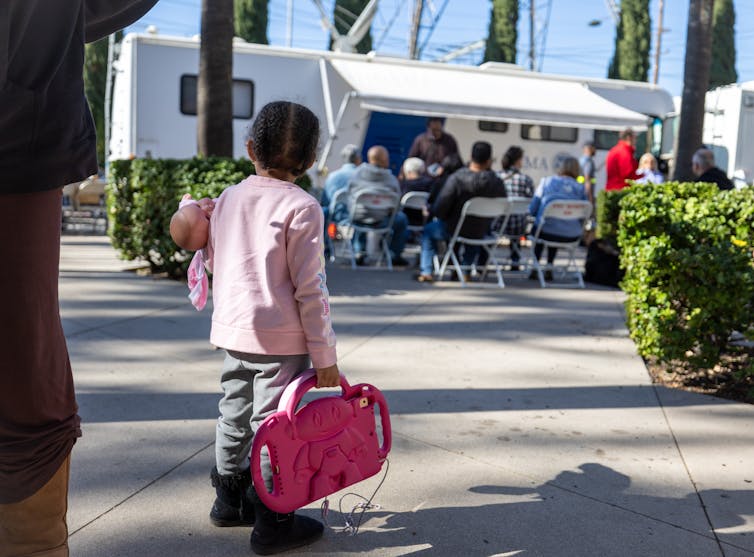
Allen J. Schaben/Los Angeles Times via Getty Images
Learning from past disasters
After the 2020 Slater Fire in Happy Camp, California, a rural town about 25 miles south of the Oregon border, we conducted focus groups with children who had lost homes and schools.
Our study found that despite experiencing profound loss, many of the children expressed gratitude for their communities and an eagerness to rebuild. Their perspectives revealed both resilience and critical gaps in disaster response – gaps that we see unfolding in Los Angeles today.
One of the biggest lessons from the Slater Fire and other disasters is that children recover best when they are given a sense of stability and normalcy as quickly as possible. The faster children can return to a routine, the better their emotional and academic outcomes tend to be. Schools, child care facilities and structured activities all play a crucial role in this process.
Helping children cope with stress
To assist parents and caregivers in navigating difficult conversations after a natural disaster, substantial research has explored how to talk to kids about disasters.
For families navigating the emotional toll of this disaster, open conversations are key. Avoiding the topic in an attempt to protect children can make them more anxious. Instead, caregivers should create space for children to express their emotions and ask questions. Children’s responses to trauma vary based on their age and experiences, but common reactions may include anxiety about future wildfires, trouble sleeping, and withdrawing from activities they once enjoyed.

Children may react differently, and it is important to be on the lookout for signs of stress. Younger children between ages 1 and 5 may become more irritable and may exhibit signs of developmental regression.
Older children between the ages of 14 and 18 may begin to show signs of depression or isolate themselves. They may also begin to act out or engage in risk-taking behaviors. Strategies that can help children process the experience include maintaining routines, keeping an open line of communication, encouraging creative outlets and modeling desired behaviors.
Tweens and teens may also find comfort in the shared experience with their friends. Rita’s best friend shared that her 11-year-old daughter and 10 of her friends named their chat group “70% homeless,” a telling reflection of how they are processing the disaster together.
Caring for our children after a disaster
Organizations such as Project:Camp, a nonprofit that provides pop-up camps for children affected by disasters, have stepped in to offer immediate child care relief in Eagle Rock, California, about 8 miles from Altadena. These programs not only support children’s mental health by offering structured, trauma-informed care in a fun environment, but they also give caregivers the time and space necessary to begin rebuilding their lives.
The services provided by these sorts of programs can serve as models that can be incorporated into the planning process for cities and counties. This allows more time for adults to focus on recovery needs while limiting the time that children must spend alone.
For families still struggling after the LA fires, we recommend talking to school counselors, seeking community support and contacting local disaster relief programs.
Looking ahead
Rebuilding after a disaster is about more than just reconstructing homes and infrastructure. It’s about restoring a sense of security for families, especially children.
If there is one thing our research has taught us, it is that children are incredibly resilient. But resilience is not built in isolation. Rather, it comes from strong support systems, thoughtful policies and communities that put their youngest members first in times of crisis. Prioritizing schools and child care centers in recovery plans helps to ensure that children can return to safe, supportive environments as soon as possible.![]()
Rita V. Burke, Associate Professor of Clinical Population and Public Health Sciences, University of Southern California and Santina Contreras, Assistant Professor of Urban Planning and Spatial Analysis, University of Southern California
This article is republished from The Conversation under a Creative Commons license. Read the original article.



